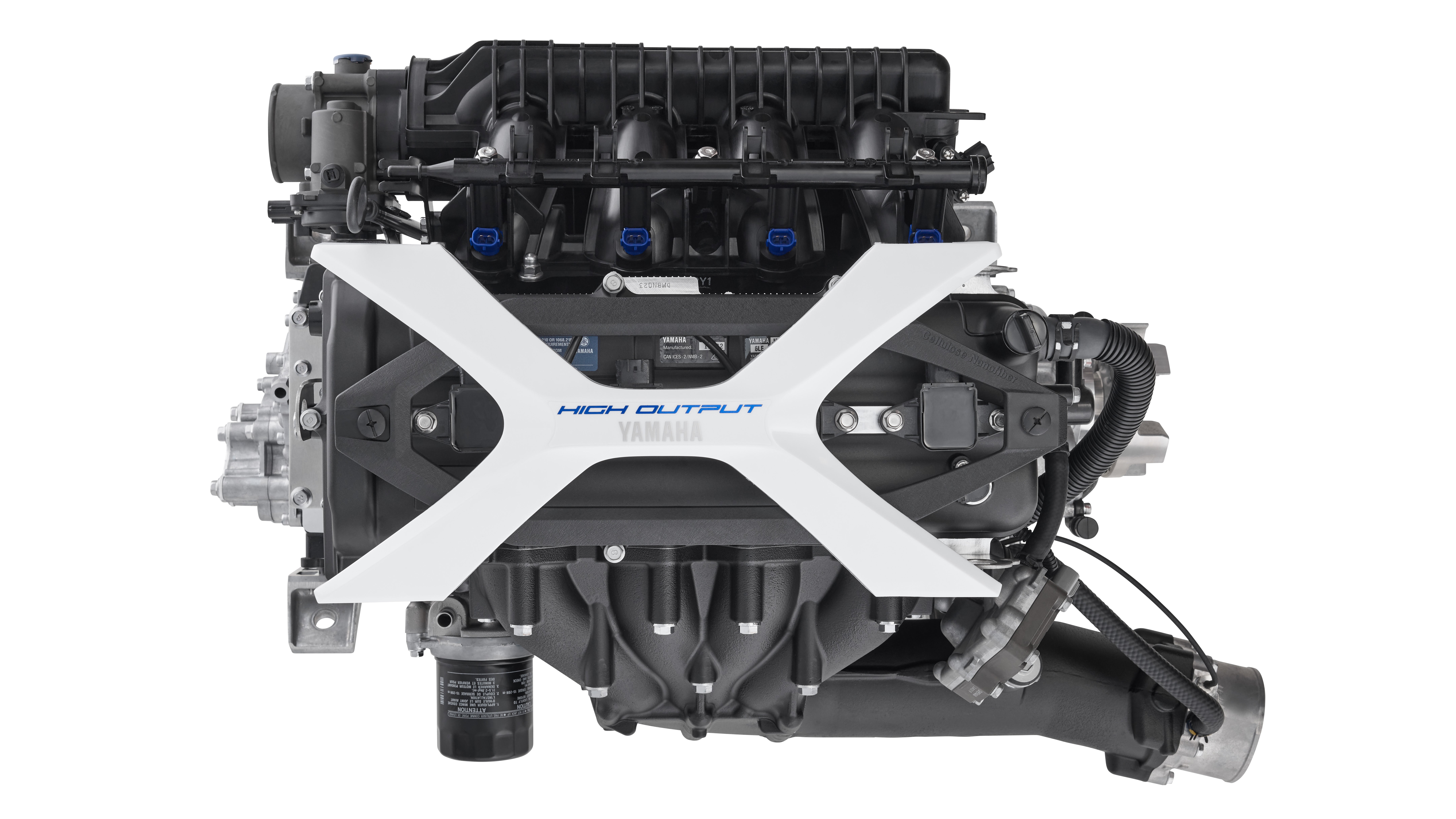2024 Yamaha VX Cruiser HO Review

Yamaha’s VX Cruiser HO was one of several models that received a new infusion of power for 2024. A new 1.9-liter High Output engine ups horsepower to an even 200, makes acceleration more snappy off the bottom end and edges top speed ever higher, all without relying on a gas-hungry supercharger.
Power Hungry
Engine: Four-cylinder 1,898cc High Output
Fuel Capacity: 18.51 gal.
Stowage Capacity: 44.5 gal.
Seating Capacity: 3
Price: Starting at $13,599
The 2024 1.9-liter (1,898cc) High Output engine isn’t drastically larger than the 2023-and-earlier 1,812cc, but it’s almost completely new from top to bottom.
Improvements touch upon not only power and efficiency, but also aim to lessen the engine’s environmental impact. Highlights include smoother, quicker acceleration and higher top speed, accomplished by a combination of changes including increasing displacement by switching to 88mm pistons, optimizing intake and exhaust paths, and increasing the size of the throttle body by 10-percent to deliver added power and torque.

As to why it looks different, credit the new engine cover and exhaust manifold. The engine cover includes plant-derived cellulose nano fiber reinforced resin. The choice is over 25-percent lighter than existing resin materials but also is more easily recycled. The result is less plastics used and a reduction in greenhouse gas emissions (primarily carbon dioxide). The engine is also pretty visually appealing for those that like to leave the saddle off beachside.
That’s a pretty speedy Cliffs Notes version of many features and changes, but the end result is yes, the VX Cruiser HO is indeed faster than its predecessor. The outgoing model typically topped out in the mid-to-upper 50s, the new version averages 62 mph (although my testing saw brief spurts notably higher depending on conditions and the brutal heat and humidity of an Atlanta-area summer day). Acceleration does indeed feel crisper, with the craft accelerating strong out of the hole and moving smoothly through the powerband. VH XO models also receive a scoop grate intake, enhancing hookup while also improving stability.

Nice Package
New engines always get the most buzz, but the VX Cruiser also excels for its all-around package — classic stable-but-agile Yamaha hull design, abundance of amenities and comfortable, supportive ergonomics.

Features are highlighted by Yamaha’s RiDE system, the dual-throttle approach to forward and reverse that has proven one of the most intuitive handling solutions on the market. Pull the throttle for forward motion, pull the reverse lever for backward motion, and more pull equals more response. Simple. Release both levers and the craft goes into a neutral mode. The solution is a favorite for low-speed maneuvering in tight quarters like a crowded dockspace. Applying the RiDE/reverse lever at speed also lowers the reverse bucket to provide rapid deceleration while maintaining a level, controlled attitude.
More obvious extras include a 4.3” Connext color display. It’s not the touchscreen found on FX models, relying instead on a touchpad control for navigation. It does, however, provide the normal info on speed/fuel/engine as well as allow the driver to tweak both acceleration response as well as top speed. There’s also an easy-to-use cruise control and no-wake mode, as well as security code to prevent theft.

As to comfort, the tiered, supportive Cruiser saddle is awesome on longer rides, but also excels for passengers and driver during more aggressive carving. Footwell drains keep water from staying trapped in the footwells, cupholders keep a water bottle within reach without digging into storage (and can be repurposed with ball mounts to add GoPro or GPS) and a watertight glovebox features USB port, 12-volt charging and minimal LED lighting to better see contents. Additional highlights? Generous forward storage, watertight underseat compartment, one of the better-designed spring-loaded boarding steps, MarineMat traction, and optional Bluetooth factory audio system.
Final Word
Competitive models include Sea-Doo’s GTX 170 ($15,199) and Kawasaki’s Jet Ski STX 160LX ($14,299). Both forego superchargers but don’t match the 1.9-liter Yamaha’s 200 horsepower. Both do offer cruiser-style saddles, their own take on electronic reverse and deceleration systems, and optional audio.
All are solid contenders in this midrange sweet-spot in the PWC market, craft that can satisfy a wide variety of family members and excel at touring. But as the saying goes, “there’s no replacement for displacement.” And in that regard, Yamaha tops the category.

Get PersonalWatercraft.com in your Inbox!
Like PersonalWatercraft.com on Facebook
Comments
Most Popular

2025 Yamaha JetBlaster PRO 2-Up Review

Remembering the Sea-Doo XP

2024 Kawasaki Jet Ski STX 160X Review

2017 Kawasaki Jet Ski Ultra 310LX Review

Whatever Happened to the Wetbike?












 Your Privacy Choices
Your Privacy Choices